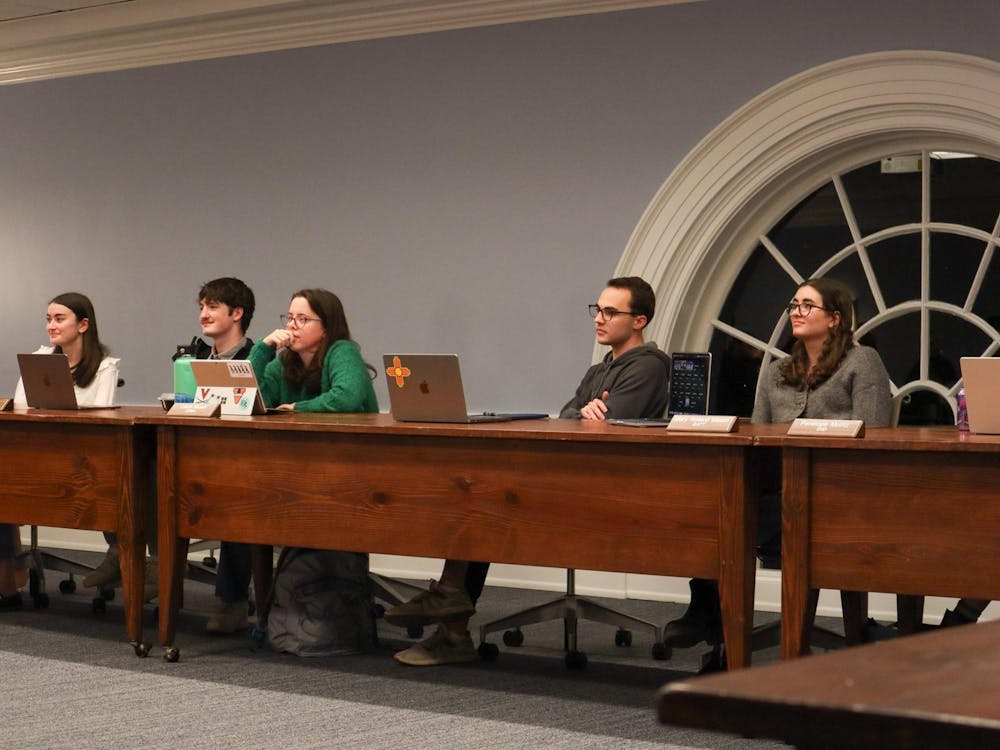When a seriously ill patient asks his doctor, "Why did this disease happen to me?" or "How could God do this to me?" he needs more than just a scientific explanation.
These types of inquiries may be "cosmic questions" - questions that hinge on human experience - with both spiritual roots and vast practical implications, said Margaret Mohrmann, medical school curriculum co-director and associate professor of pediatric medicine.
Enter novel Medical School curricula, which emphasize the spiritual dimension of medical care as much as technological advancements. The University Medical School, one of 50 schools across the nation to rethink its approach to medical education, incorporated a Spirituality and Medicine curriculum into its program three years ago, and by the end of the 2000-2001 academic year, second-year Medical School students also will be introduced to this new curriculum.
|
The program allows Medical School students to "recognize differences between individuals that might not be apparent at first sight," said first-year Medical School student Ali Reza Gohari during one of his routine nightly study sessions in his apartment. "Religion and spirituality are some of those differences, and it is very exciting and helpful to have a more balanced perspective of medicine that deals with the ethical ramifications of medical knowledge and progress."
The new spirituality curriculum focuses less on specific religious traditions and more on helping Medical School students to "be curious in a non-intrusive way," Mohrmann said.
The treatment of spirituality by modern medicine is not a ploy or advertisement to draw the public back, Mohrmann said, but "a way of recognizing what patients already know, that there's more to this" than just pure scientific medicine. Now more than ever, patients are "making it clear who they are and what they need."
The purpose of the Spirituality and Medicine curriculum "is primarily to enable Medical School students to learn to recognize the spiritual components of patients' illnesses, to recognize them as such, as spiritual causes," she said.
Another curriculum goal is to teach students to approach each patient as an individual with personal convictions. A physician should work to meet the patient's demands, rather than the dogmatic demands of the patient's religion.
The curriculum's notion of spirituality appeals to that "broader sense of the way people understand the universe and themselves in it," whether or not they believe in God. Instead of focusing on religious differences, these spirituality classes focus on recognition of basic human values.
The University Medical School has always provided students with a broad curriculum, encompassing subjects outside the scientific field. It offers numerous humanities electives and has sponsored a weekly forum to promote dialogue between society and medical professionals for the last 30 years.
Close examination of the human experience during chronic terminal illnesses reveals the importance of spirituality in human life. Terminal care requires a more spiritual approach to medical care; chronic illnesses such as cancer can be devastating and life changing. They disrupt patients' spiritual alignment with the world and force them to critically examine and redefine their lives.
"What we would like for physicians to be able to do is to be able to recognize that question, to hear it for what it is, not to try to answer it medically, not to dismiss it certainly, but to ... validate it," Mohrmann said. A physician's responsive attitude and reassuring presence will allow the patient's spiritual struggle to become a significant, recognized dimension of the overall healing process.
Chronic illnesses not only highlight the importance of spirituality in individual experiences of patients, but also illustrate the changing nature of medical practice. Medicine's success over the last century has been nothing less than astounding. Medical technological advances ranging from insulin pumps to pacemakers offer a tangible complement to revolutionary discoveries in human physiology, such as the discovery of the structure of DNA.
Doctors following a traditional medical model identify a disease, study how the disease behaves and develop a remedy based on this information. This disease-remedy model remains effective for acute pneumonia or childhood polio. However, this model may not be helpful for chronically ill patients with diseases such as cancer or degenerative neurological disorders. In these severe chronic medical conditions, coping replaces cure as the primary imperative.
In addition, external factors support the dialogue between spirituality and medicine. For example, organizations such as the Pennsylvania-based Templeton Foundation fund initiatives to increase the number of spirituality and medical programs. The Templeton Foundation is the chief contributor to the University's Spirituality and Medicine curriculum.
Journalism also has played a significant role in discussing the spiritual and ethical ramifications of scientific knowledge. The most significant contributions of the print media have not been in discussing medical findings, Mohrmann said. Instead, print media is most valuable when it presents relevant human experiences and reflections about medicine.
The Medical School's Spirituality and Medicine curriculum, initiated by Mohrmann and Medical School Prof. Marsha Childress, currently offers programs for first-, third- and fourth-year Medical School students. The curriculum's second-year program is still in its developmental stages but should be effective for the 2001-2002 academic year. The curriculum offers Medical School students the chance to meet for presentations and discussions about their personal spirituality.
With the disease-remedy model of medicine no longer universally applicable, a more dynamic medical model is needed, Mohrmann said. This model should not only attend to changes in our bodies, but also remain responsive, to "the way our lives change," she said.






